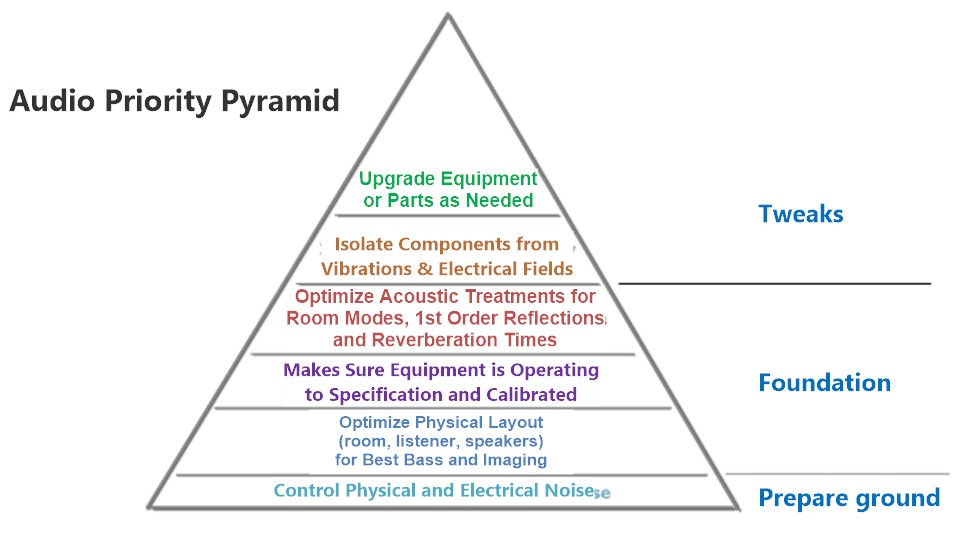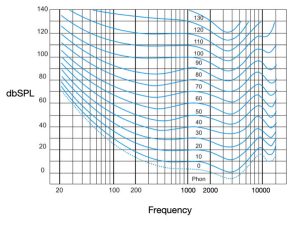Norman Varney of AV RoomService Ltd. has joined Positive Feedback as a Senior Technical Editor as of Issue 113. His expertise in his field of audio acoustics and experience in the field makes him a helpful voice in our creative community for the audio arts. As has been our wont from the beginning of PF, we do welcome contributions from qualified voices in the high-end audio industry, provided that they don't use the opportunity to market their own products/attack competitors and others...which we simply don't allow here.
Norman's biography follows:
Norman Varney is the owner of AV RoomService, an acoustic design company that also offers a few acoustical products. Having been in the noise control and sound quality industries for decades he has earned awards for acoustical products and room designs while working for A/V RoomService, Kinetics Noise Control, Owens Corning Science & Technology Center and MIT. Mr. Varney has presented white papers to the industry and written articles on acoustics for numerous publications over the years, as well as participated in seminars and panel discussions. He is an active member of ASTM (Committee E-33 on Building and Environmental Acoustics), Acoustic Society of America, Institute of Noise Control Engineering, AES, NAMM, CEDIA, etc.
We welcome Norman as a member of our audio community. His initial article is immediately below.
My world revolves around acoustics, and music is the reason. As I write this week, it was fifty seven years ago that The Beatles appeared on the Ed Sullivan Show, and I was three and half years old. I liked what I heard so much that I begged my mom to buy me their 45 the next day. I favored the B-side with "I Saw Her Standing There," and today I still find the band's live performance on that recording remarkable. I started listening to and collecting all kinds of music from that day on. I also started an interest in playing drums and messing around with a small portable reel-to-reel when I was four or five. Nothing much has changed since then, other than my knowledge of audio, music, and acoustics has grown. My pursuit for more is constant. Music is such powerful medicine. To capture and reproduce it accurately is not an easy task. To experience a great recording, of a great performance, of a great piece of music is the holy grail of audio, right? Having said that, I still enjoy great music even when playing on a cheap boom box.
To get closer to the music requires a disciplined process. Great equipment can never sound great in a poor environment. However, a mediocre system can sound great in a good environment. Set-up of the equipment within the room, and the acoustic characteristics of the space dictate the resulting experience for the listener. Expensive equipment cannot overcome acoustics. Electrons do not control sound waves. Altering the electrical signal feeding the loudspeakers is very limited, and can have side effects. Once that electrical signal leaves the speaker and is converted to air pressure variations, and those sound waves propagate through the room (both through the structure and the air), they are at the mercy of your room. The construction materials and methods, shape and size, speaker and listener locations, electronic and physical calibration of the equipment, and finally the interior furnishings and finishes all have the last and loudest say on your experience. This is acoustics. These are the ingredients that make or break the possibility of a magnificent experience. The quality of equipment helps for sure, but the limiting factor will almost always be the acoustics. The equipment can only perform as well as it is allowed. The enjoyment of the investment is limited by the acoustics.
This is the stuff I like to write about and teach others. This is the knowledge that will allow you more satisfaction over say purchasing a new preamp for example. Much of it is free and fun to implement. You will find that my writings are backed with science. Audio and acoustic science has come a long way in the last forty years and continues to evolve. I love learning about it and do so every day. I am a believer in using trained ears along with instrumentation to evaluate, confirm and/or investigate. For me, the ears have the last say. It is important to know that we don't currently have the means of measuring all that we can perceive. Therefore, it is often difficult to correlate what we hear with what we can measure. That, along with our unsophisticated and nonstandard vocabulary for expressing sonic attributes, limits quality communication to a significant degree. Standardization of acoustics for the critical listening playback environment could really use the respect it deserves to advance our industry and our love for music.
The recording academy (Producers and Engineers Wing) has done a much better job addressing recommendations for set-up, calibration, and acoustics (both noise control and sound quality) than the consumer electronics industry has. Professionals understand that neutrality means repeatability, which means better translation to other venues. They have to keep close tabs on consistency from the recording studios, to the mixing studio, to the mastering studios. Obviously, if the consumer wants to get closer to the artist, he or she should strive to have a similar playback environment. By similar, I mean control of the noise floor, room modes, reverberation times, first order reflections, as well as frequency response, speaker/listener positions, speaker time alignment, etc.
If a mixing engineer is working with speaker monitors or room that has emphasis around 250Hz, he or she is compensating for it, knowingly or unknowingly, and the chances of it sounding like he or she expects it to be elsewhere is near nil. Same goes for you, the consumer, who just bought a new set of speakers based on a review you recently read. You feel that the bass is not right. Could it be that the speakers are deficient, or is it your room that is interfering with them, or doing the same in the reviewer's room? Like any science experiment, you need to control and track the variables to understand the results. My main point here is that you have to start with an even playing field. If you don't, you will be building your system around, and compensating for, a built-in deficiency. That deficiency could be a room resonance, bias of an amplifier, cable impedance incompatibility, etc. Most audiophiles are building their systems around some major equipment incompatibility or room interference. They will forever be compensating for the issue(s), chasing their own tail in a circle of confusion. A neutral playing field stops the confusion.
I suggest controlling the room acoustics first so that you can build your audio system confidently. What you hear will be more accurate and more revealing, not to mention, much more enjoyable and engaging. The equipment's performance potential will also increase exponentially as these distortions are removed. Your equipment will thank you for it! Just as an electrical system has inductance, resistance and capacitance properties, mechanical and acoustical systems have similar characteristics. The goal is for ease and simplicity of flow.

I know that acoustics can be daunting to most audiophiles, and some areas of acoustics can be expensive or even impossible to implement due to physical constraints. Much of it only costs some time, though, and there are many things that can be done on a tight budget. There is a hierarchical approach to audio playback for sound quality. Follow me in my articles here at Positive Feedback as I discuss audio and acoustics, and I'm sure you will benefit not only from a greater awareness and understanding, but a greater enjoyment of music and your system. I'll help you identify and prioritize the problems in your system, and as you clean it up you will be able to make better buying decisions, or maybe even become satisfied with what you already own.
Caution: applying what you learn here to your audio system may cause increased heart rate, blood pressure, goose bumps, tears, and/or cyclic body movements!






































